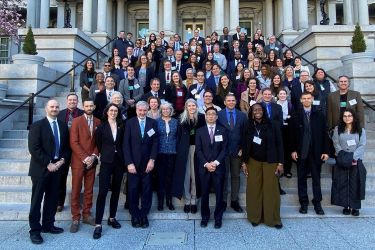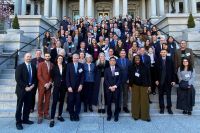Sustainability at Stanford comes in many forms. Research provides foundational insights and clever solutions. Thought leadership guides careful, forward-thinking innovation and policy. Plus, the university itself is a living lab for sustainable action.
As the stories below show, Stanford is working toward ambitious campus sustainability goals with efforts that address power use and generation, food waste, heating and cooling, commuting, travel, events, and much more. Altogether, Stanford is working toward producing zero waste by 2030 and has set a goal of generating 100 percent of campus electricity needs from renewable sources and reducing greenhouse gas emissions to 80 percent below peak levels by 2025 – both of which the university achieved in 2022 when a second solar energy plant came online. The university has committed to reaching at least net-zero emissions from its operations by 2050.
That commitment extends to campus research and education. In fall, the university launched the Stanford Doerr School of Sustainability – its first new school in 75 years, which amplifies the university’s sustainability scholarship, education, and impact.














